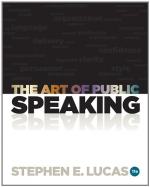NOTE: It is hoped that this exercise will be varied and expanded until the pupil has gained considerable mastery of imaginative narration. (See chapter on “Narration.”)
11. Experiments have proved that the majority of people think most vividly in terms of visual images. However, some think more readily in terms of auditory and motor images. It is a good plan to mix all kinds of images in the course of your address for you will doubtless have all kinds of hearers. This plan will serve to give variety and strengthen your effects by appealing to the several senses of each hearer, as well as interesting many different auditors. For exercise, (a) give several original examples of compound images, and (b) construct brief descriptions of the scenes imagined. For example, the falling of a bridge in process of building.
12. Read the following observantly:
The strikers suffered bitter poverty last winter in New York.
Last winter a woman visiting the East Side of New York City saw another woman coming out of a tenement house wringing her hands. Upon inquiry the visitor found that a child had fainted in one of the apartments. She entered, and saw the child ill and in rags, while the father, a striker, was too poor to provide medical help. A physician was called and said the child had fainted from lack of food. The only food in the home was dried fish. The visitor provided groceries for the family and ordered the milkman to leave milk for them daily. A month later she returned. The father of the family knelt down before her, and calling her an angel said that she had saved their lives, for the milk she had provided was all the food they had had.
In the two preceding paragraphs we have substantially the same story, told twice. In the first paragraph we have a fact stated in general terms. In the second, we have an outline picture of a specific happening. Now expand this outline into a dramatic recital, drawing freely upon your imagination.
FOOTNOTES:
[Footnote 29: Inquiries into Human Faculty.]
[Footnote 30: Consult any good rhetoric. An unabridged dictionary will also be of help.]
[Footnote 31: For a full discussion of the form see, The Art of Story-Writing, by J. Berg Esenwein and Mary D. Chambers.]
CHAPTER XXVII
GROWING A VOCABULARY
Boys flying kites haul in
their white winged birds;
You can’t do that way
when you’re flying words.
“Careful with fire,”
is good advice we know,
“Careful with words,”
is ten times doubly so.
Thoughts unexpressed many
sometimes fall back dead;
But God Himself can’t
kill them when they’re said.
—WILL CARLETON, The First Settler’s Story.




